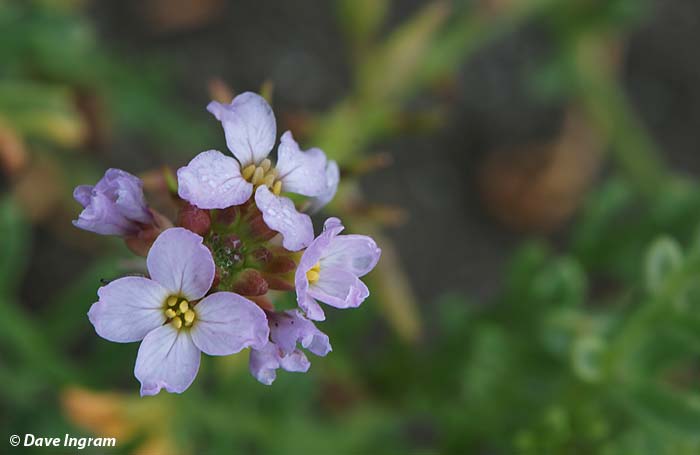Last week I hiked out to do some intertidal exploration at the wonderful rocks at Schooner Cove, a truly inspiring part of Pacific Rim National Park Reserve and at a low tide, spectacular for marine life. However, the small dune ecosystem along the shore of this remote cove is also fascinating. Two species of searockets grow in the dunes in this part of the park.

Hiking to Schooner Cove
Schooner Cove is a fair walk from the closest parking area at either Incinerator Rock or the Schooner Cove Trail. From Incinerator it is approximately 45 minutes of brisk walking along the beach. This is the access point that I prefer because the walking is easy on the hard flat sand at low tide. I spent a couple of hours poking around the rocks at Schooner before the tide started to turn. At this point it was less safe to hunt for sea stars and more exotic life around the front part of two rocky islands. This area is completely surrounded by sand only at very low tides (less than 2 foot tides). I’ll write more about the tide pooling in a later post.
Since I no longer was able to access the diverse intertidal zone at Schooner I turned my attention to the dunes and botany. The dunes here are smaller than those at Wickaninnish Beach but they are very interesting. There are a number of unusual plants growing in the dune in addition to things like Yellow Sand-verbena and Beach Morning-glory that you’d also find at Wickaninnish Beach.
Two Types of Searockets
One of these plants is searocket (Cakile sp.). It also grows at the Wickaninnish dunes but it is very noticeable at Schooner Cove. It occupies the dynamic edge of the sand between the top of the beach and the dunes themselves, moving out towards the high tide line. At Schooner, I found two species of Searocket – American searocket (Cakile edentula) and European searocket (Cakile maritima). The former is native. Because the former is also found on the Atlantic coast and shores of the Great Lakes, there is some thought that American searocket was introduced to the west coast. The latter was introduced from Europe.
So how to tell them apart?
American Searocket
At first glance, both species of searocket look superficially similar. However, American searocket has thick fleshy leaves that are oblong and lobed. The flowers are white to pinkish-purple and have 4 petals (searockets belong in the Mustard family). It grows on sandy beaches near the ocean.
European Searocket
Introduced European searocket also has fleshy leaves. The leaves of European searocket are more finely divided when compared to American searocket. In addition, the flowers are larger but similar in colour to the American Searocket. Both European searocket and American searocket grow in the same habitat.


American Searocket was very common at Schooner Cove and although I only found one European Searocket plant it was great to be able to compare the two species side by side.


